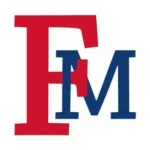April 15, 2023

Making Some Room In the Wild
Making Some Room In the Wild
By Tucker Mitchell | March 2023 | FMU Focus Magazine Spring 2023

FMU’s Wildsumaco Biological Station is ready to grow, opening the door to even more extraordinary educational opportunities.
The Wildsumaco Biological Research Station, the unique teaching lab operated by Francis Marion University, UNC-Wilmington, and Pontificia Universidad Católica del Ecuador, has delivered once-in-a-lifetime learning experiences to thousands of students since it opened 10 years ago.
Adventures at the outpost, which is situated in a remote rain forest next to a dormant volcano in Ecuador’s Andes Mountains, have led to the discovery of new species, the launch of unexpected careers, and the changing of lives.
Now it’s time to open the doors to even more adventures and more learning.
The partner universities have put together a plan that calls for eventually tripling the size of the structures at the site. It still won’t be a big place — the current buildings take up less than 4,000 square feet — but the additions will allow for growth in both the quantity and quality of the educational programming.
“We have a functional station now,” says FMU Professor Travis Knowles, the co-director of the station. “But it’s time we made a little room. When you see the transformation that occurs in the young people — and frankly, in some of the older people, too — who make the trip, you long for a little more space, a little more capacity. It’s a great resource. We’d like to make this available to as many people as possible.”
The project began more than a decade ago through a collaboration between Knowles and a former graduate school classmate of his, Brian Arbogast, now a member of the biology faculty at UNCW. While conducting bird research, Knowles and Arbogast met Jim and Bonnie Olson and Jonas Nilsson, the co-founders of the Wildsumaco Sanctuary, a 2,000-plus acre eco-tourism site in Ecuador. The Olsons were seeking a research facility to pair with their birding lodge. One thing led to another after the serendipitous meeting, and the Wildsumaco station was born.
The Wildsumaco Lodge leases the research site to the collaborating institutions for a nominal fee. The Olsons have since retired back to the U.S., but Knowles says everyone is still on board for a long-term future in which the ecotourism business both supports and benefits from the research facility.
The current facility consists of three small buildings. There’s enough space for 18 tightly packed students and researcher-teachers to visit at once, but not much more. The one non-residential building houses the classroom space and also doubles as a lab … and dining room, and kitchen, and anything else that’s not needed for storage and sleeping.
 The first phase of the planned expansion would add two more buildings, one each for a laboratory and dedicated classroom. Future phases call for a third dorm space, another classroom, and eventually, discreet housing for visiting researchers.
The first phase of the planned expansion would add two more buildings, one each for a laboratory and dedicated classroom. Future phases call for a third dorm space, another classroom, and eventually, discreet housing for visiting researchers.
The new plan for the station, funded by a National Science Function grant, is functional and efficient, but not grandiose. It is just right for what Wildsumaco should become.
“There are no plans that this will ever become some huge biological research facility,” says Knowles. “That wouldn’t fit the site and it wouldn’t fit our vision either. We kind of like the scale we have now.”
Although, they certainly want to increase the numbers and broaden the diversity of those partaking in Wildsumaco’s wonders.
The Wildsumaco station was drawing close to 1,000 visitors a year before COVID hit, ending travel until last summer. About two thirds of that number were from the partner institutions, including FMU.
During the station’s first decade, most of the FMU students traveling to Wildsumaco have been biology majors. Last summer, a group of education majors, some with an eye on specializing in biology through FMU’s concentration in that field, visited the site.
Knowles would like to see Wildsumaco’s branches spreading into more new spaces. An artist-in-residence series has been discussed, the thought being that the station’s overwhelming beauty and teeming wildlife could inspire writers, musicians, and artists of many stripes. Current FMU student Brittany Sehnke exhibited the potential of this idea with her captivating sketches from Wildsumaco, profiled in last winter’s edition of Focus.
“There’s really no limit to what might be done,” says Knowles. “The arts, the sciences, really almost any field has connections. It’s just such an extraordinary place. We’re continuing to reach out to our colleagues across campus, to solicit ideas and stoke interest. I’m really looking forward to seeing what occurs.”








